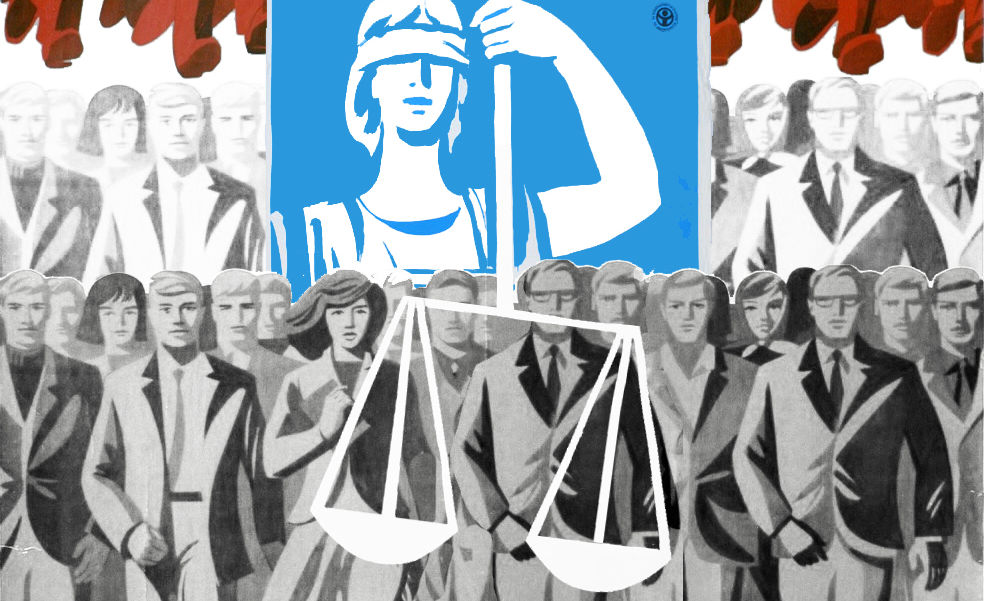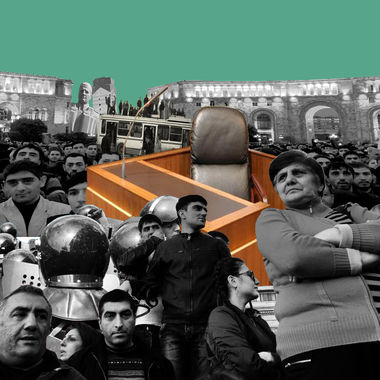Following the Velvet Revolution, Armenia has witnessed an extensive discussion revolving around transitional justice (TJ) – that is, mechanisms dealing with former authoritarian elites in new democracies. On his 100th day in office, Prime Minister Pashinyan emphasized the importance of TJ in uprooting the authoritarian legacy of the previous regime. Several high-profile criminal cases have since emerged, targeting leaders and the inner circle of the pre-2018 regime. Most recently, the National Assembly called for a referendum to decide whether seven of the nine judges in the Constitutional Court will continue to serve in their positions (a process that has since stalled by COVID-19).
Albeit still in its infancy, TJ in Armenia has produced mass awareness about the details of previous wrongdoing and encouraged public discourse about important democratic institution-building. However, not all transitions from authoritarian systems necessarily lead to democracies with rigorous TJ policies. In fact, many such states give birth to successor authoritarian or hybrid regimes where TJ is, by definition, infeasible.
One need not look far for such a case: newly-independent Armenia fell into the slippery slope of democratic backsliding after the dissolution of the Soviet Union in 1991.
The reasons for the failure of democracy to take root in post-communist Armenia are numerous. A major factor was the remaining “infrastructure” from its authoritarian past, crystallizing into the long-lasting entrenchment of a corrupt political landscape. Armenia did not make an immediate hard break in governance after independence. The governing Supreme Council that would later become the National Assembly had been elected in 1990 under the Soviet framework. Many former Communist Party members maintained their official positions in the state apparatus.
Now, as Armenia does endeavor to hit a deeper reset following the Velvet Revolution, there are important lessons to be learned from the post-communist transition to avoid another democratic backsliding and reversion to old ways of doing things.
What Happened to Communists After Independence?
The short answer is: almost nothing. The newly-formed Ter-Petrosyan government did not purge the state apparatus, did not purge the secret police and collaborators (a process known as lustration), did not provide access to secret files, did not set up a truth commission to investigate communist abuses and did not offer reparations to victims of human rights abuses. The following Kocharyan and Sargsyan administrations followed suit. This is unsurprising since, as most government officials maintained their roles after independence, such measures would likely have resulted in self-purging.
One can think of several reasons why strengthening the foundations of democracy might not have been at the forefront of many Armenians’ minds immediately after independence in 1991. The newly-independent republic was just recovering from the devastating 1988 Spitak earthquake and was caught up in armed conflict over Nagorno-Karabakh while simultaneously suffering a collapse in its economic supply chain. It is reasonable that these existential threats pushed other issues to the backburner. For many Armenians, the post-authoritarian struggle was an “us vs. them” fight, which left little room for airing grievances against co-nationals.
However, Armenia grew even more authoritarian following the initial years of turbulence. Future administrations were, understandably, not keen to address the country’s authoritarian past, even after the geopolitical and socioeconomic landscape had somewhat stabilized. Admittedly, attempts at lustration did appear in the 2010s but were doomed to fail. Bills aimed at holding former KGB agents accountable surfaced in the National Assembly in September 2011 and December 2016 but failed to pass. It is worth noting that lustration measures that are introduced many years after the end of an authoritarian regime are considered suspect, “raising doubts as to their actual goals.” However, this further demonstrates that the former KGB apparatus was left virtually intact.
The (Not So) Clandestine Dictatorship
The post-communist elites did not shy away from using the years after independence in an opportunistic fashion. The newly-formed Ter-Petrosyan government relied heavily on coercive paramilitary power, resulting in the formation of a powerful army. Instead of addressing Stalinist purges or investigating collaborations with the KGB, the newly-formed Republic chose to persecute its opposition. The Ter-Petrosyan government repeatedly “harassed and prosecuted journalists, [...] shut down 11 major media outlets, including the country’s largest newspaper,” and banned the largest opposition party, the Armenian Revolutionary Party (Dashnaktsutyun). The post-authoritarian regime arguably became an authoritarian one itself.
Crucially, the post-independence regime inherited and retained a significant internal security apparatus that was left virtually untouched following the transition. The National Security Service (NSS) became the former KGB’s poster child as it “clearly retained the Soviet-era function of secret police, monitoring and, if necessary, suppressing any activity [threatening] the regime’s grip on power.” Seemingly a vestige from the country’s Soviet past, the NSS was one of the central tools used by the new regime in thwarting dissent, consolidating the power of the new elites and creating a system of widespread cronyism. It is, therefore, hardly surprising that the secret apparatus of the former regime was left intact as “more radical approaches to post-communist-related transitional justice would have affected the rank and file of Armenian current elites, something political parties did not support.” At a time when the new government was seemingly too busy confronting external threats, it found a rather suitable opportunity to consolidate its power at the expense of democracy.
This approach continued well after the initial years of independence and became ingrained in the post-transition order. The state used the NSS to persecute individuals associated with the March 2008 protests. According to a Human Rights Watch report, several individuals were arrested without notice to families “and their right to engage a lawyer of their choice was often impeded.” In the true spirit of the former KGB’s poster child, the NSS lived up to its predecessor’s role as the shock troops of those in power. These and a plethora of other incidents where the government overstepped its boundaries led to the accrual of public distrust as Armenia went down the slippery slope of democratic backsliding.
* * *
Armenia’s transition in 1991 brought about a state with a blatant disregard for democracy, sustained through the unwavering support of remnant communist institutions. While little can be done about former communist elites, Armenia and Armenians ought to adopt a forward-looking approach with an appreciation for the mistakes of the past. (The newly adopted “Law on the Confiscation of Illegally-Acquired Assets” only applies back to 1991.) Armenia’s government should be commended for the initiatives undertaken so far but should also realize the importance of moving forward with a more systematic, effective and coordinated TJ platform. One would hope that the experience prior to the Velvet Revolution can act as a cautionary tale that we will be vigilant enough to ensure the past does not repeat itself.
Documentary
Transitional Justice is a special form of justice, applied temporarily in countries where there have been massive abuses of human rights, usurpation of power or genocide. It can also applied in countries like Armenia, where important political and social transition has taken place, where at the same time, there needs to be a break with the past.
Interview
Professor William Schabas, considered the world expert on the law of genocide and international law, was in Armenia to participate as the main rapporteur in an international symposium on transitional justice in Yerevan. EVN Report's Maria Titizian sat down with Schabas to discuss the concept of transitional justice and its possible application in Armenia. The symposium was organized by the Zoryan Institute of Canada in collaboration with the American University of Armenia.
White Paper
Transitional Justice Agenda for the Republic of Armenia
By Nerses Kopalyan
Should Armenia implement the tools of transitional justice? This White Paper, developed by Dr. Nerses Kopalyan is a comprehensive transitional justice agenda for the Republic of Armenia.
Also read
Transitional Justice: What to do About the Past?
In the year following the Velvet Revolution, several high-profile corruption and abuse of power cases have been revealed. Lingering questions remain: Can the current judicial system properly deal with these cases? Over the last several months, EVN Report has spoken with experts, academics and lawmakers about different models, possible applications and tools of transitional justice.
Comments
Annie Demirjian
6/14/2020, 9:34:55 PMThis is a brilliant reporting, Thku. TJ is never late to apply. Congratulations to Zoryan and AUA for initiating and EVN journalists for bringing it to our attention. I am one who would be happy to support the initiative from distance in any way I can. Annie







EVN Report welcomes comments that contribute to a healthy discussion and spur an informed debate. All comments will be moderated, thereby any post that includes hate speech, profanity or personal attacks will not be published.